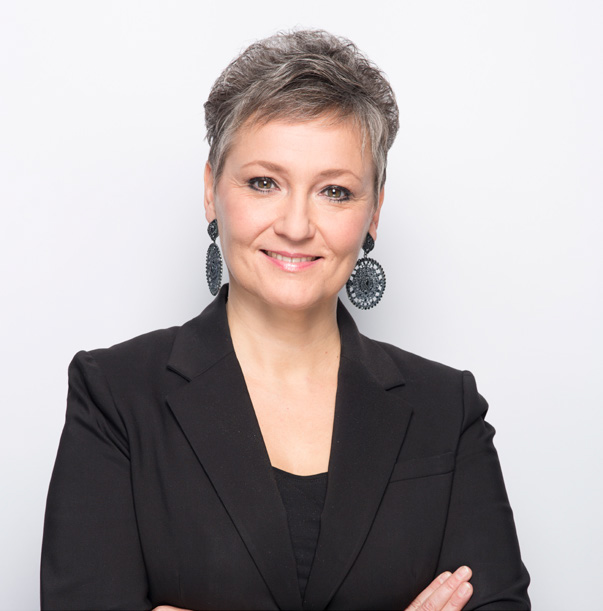Our economists views
2020 will go down in history as the Great Lockdown in reference to the Great Depression of the 1930s or the Great Recession of 2009. The COVID crisis is exceptional in its nature, its suddenness and its magnitude, with an unprecedented global recession leading to historic fiscal and monetary responses.


Isabelle Job-Bazille Jean-François Paren
Group Chief Economist Head of Global Markets Research, Crédit Agricole CIB
Business prospects for 2021 will be tightly linked to the health scenario.
2021 Will be characterised by the recovery and the rise of a new investment criteria.
All countries did not fare equally well against health and economic shocks. In the United States, the decision of most states to prioritise economic activity by restricting health constraints, combined with massive support to household incomes allowed economic activity to remain on course and to offset production losses, with GDP just 2.5% below normal. In the Eurozone the situation is more uneven. The very significant variations in performance between countries can be explained by the trade-offs between health considerations and the economy, but also by sector specialisations and by the magnitude and efficiency of the emergency fiscal plans. At the end of 2020, the gap with pre-crisis levels of activity was still 4 to 5% in Germany and in France, 6.6% in Italy and more than 9% in Spain. In the emerging world the divide has widened between Asia (excluding the Indian subcontinent), which thanks to an efficient management of the health crisis rapidly resumed its growth path, and other geographical areas whose fortunes have been varied. In any case, the fiscal and monetary responses were not as bold as in advanced economies. Eastern Europe, which is linked to the Eurozone, experienced the same growth fluctuations, while Latin America was severely impacted by the pandemic. Persistently low oil prices, combined with lower export volumes decided by OPEP+ agreements, slowed the recovery in the Middle-East. Africa as a whole avoided the health disaster but suffered serious economic and social harm. Business prospects for 2021 will be tightly linked to the health scenario, as there is a race between the virus, and in particular its more contagious variants, and the vaccines. During the first half of the year, because of continuing health constraints, the recovery will be modest but will probably avoid the “stop and go” experienced in 2020 thanks to modified lockdown strategies, and above all thanks to the “whatever it costs” fiscal support measures. During the second half of the year the growth scenario remains uncertain. It will depend on the speed of the vaccination campaign which will allow a more sustainable easing of health restrictions. Even though the size and timing of the US recovery plan is still being discussed in Congress, it is very likely that economic activity will be significantly boosted during the second half as the vaccination campaign moves forward and consumption levels catch up. This should help reach pre-crisis levels of activity before the end of 2021. The Eurozone, which is late in its vaccination campaign will have to wait until mid-2022 to overcome the crisis. In the emerging world, Asia will continue to steam ahead of other regions with a growth rate of more than 7%, followed by Latin America, Eastern Europe and the Middle East/North Africa region with growth rates varying between 3% and 4%. This crisis, which has increased fragmentation and vulnerabilities will have lasting consequences. Asian countries with their ability to mobilise abundant domestic savings to invest and innovate, will have a stronger capacity to rebound than other emerging countries – Latin America for instance – where savings rates are structurally low. States’ monetary and fiscal room for manoeuvre is another differentiating factor in financing the recovery, relying if necessary on the balance sheets of Central Banks. Advanced economies, that issue in their own currency, have an advantage over emerging countries where the sovereign risk quality makes a difference. In 2020 the shock was of an unprecedented violence and magnitude for global markets. Following the Covid 19 shock wave in March- April, the implementation of proactive and pre-emptive fiscal and monetary policies – the famous “whatever it costs” (which recalls the “whatever it takes”) – prevented uncertainty and volatility from settling in the markets for too long or causing a new financial crisis. Central Banks froze rates at record levels while flooding the market in liquidity, thus supporting the economy and the markets with amounts never previously observed in such a short period of time: more than 3 000 billion dollars (15% of GDP) for the Fed and more than 2 300 billion euros (20% of GDP for the ECB). This stabilising effect nonetheless masks very significant asset rotations. Absolutely enormous valuation gaps were created, with on the one hand the new economy (digital economy, responsible investment and transformation), and on the other the old economy in need of change. This brutal change involved record levels of flows in sovereign and private debt markets. At the end of 2020, after the US presidential elections and the announcement of the first Pfizer/BioNTech clinical trials, markets anticipated the favourable impact of a medical solution to the health crisis in 2021, allowing equity markets to reach new highs and rates to remain extremely low. 2021 will be characterised by the recovery and by the appearance of a new investment criteria. The new year started with a strong appetite for very high risk and valuation levels leaving no margin for error even though questions remain on the strength of vaccination scenarios (production, efficiency, distribution, schedule…). Central Banks’ commitment to support the economy “as long as necessary”, means not only until the crisis is over, but until economies have recovered their potential. This was confirmed by Central Banks’ various strategic monetary policy reviews. This market situation will encourage risk taking and an interest in risky assets, especially because the asset yields (whether risky or not) will remain very low because of valuation levels. This new environment will encourage investors to consider other investment criteria. Since 2020, the “green” factor has become a new key aspect, along with liquidity, volatility and yield. 2021 will very probably strengthen this momentum.
